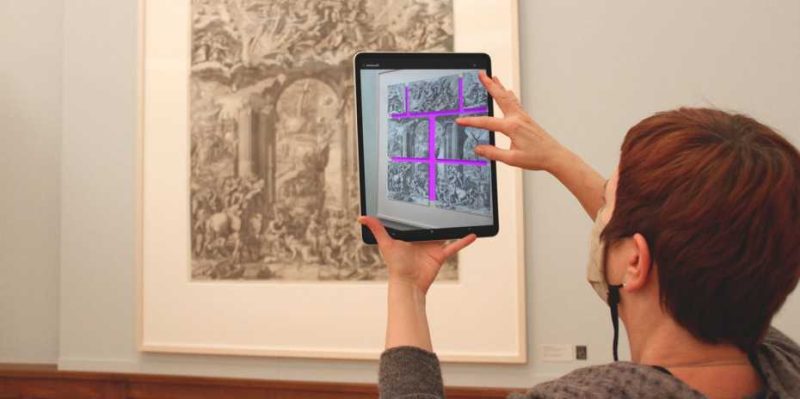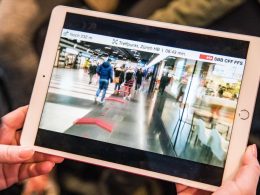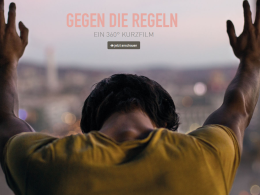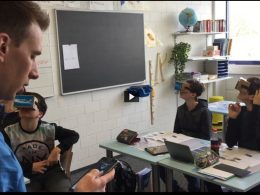The Graphische Sammlung opened its new exhibition on 9 December. Historical works can be explored there using augmented reality (AR) with a mobile phone or tablet. The technology for the exhibition app was developed by the Game Technology Centre.
The boundaries between reality and the virtual world become blurred in the exhibition room of the Graphic Arts Collection at ETH Zurich. Although the artwork hangs statically on the wall, it comes to life on the mobile phone screen. The AR app on the smartphone superimposes an earlier sketch of the exhibit, translates a Latin inscription or emphasises details that would otherwise remain undiscovered. The Game Technology Centre (GTC) at ETH Zurich has developed an app to use AR in museums. The GTC wants to use it to make art exhibitions more interactive and personalised.
The use of AR in museums is not fundamentally new, admits GTC Managing Director Fabio Zünd. He has already tried out a few AR apps himself and was often disappointed because they did not utilise the possibilities of AR well. That is why the GTC has set itself the goal of implementing AR better than museums have done so far. "We wanted to implement the idea as a platform so that museums can create an AR app themselves," explains Zünd. Curators should be able to use the cloud-based platform "Artifact" to create an AR app for their exhibition themselves and design the interactive content for it.
Emergency rehearsed with copper engravings
The platform has now been developed to such an extent that the GTC wants to use it to rehearse the real thing, so to speak. Until then, the GTC and the Graphische Sammlung ETH Zurich worked closely together for around a year to further develop the platform. Both benefited from this close cooperation: on the one hand, the GTC learnt about the curator's needs and requirements for the platform, and on the other, the Graphische Sammlung can use the app to gain experience with a new form of digital art education. "The app offers us a very good opportunity to provide low-threshold access to art. Our aim is to reach a new audience through this playful approach and, in this specific case, to get them excited about Old Master art," says Linda Schädler, Head of the Prints and Drawings Department.
The new exhibition compares the works of Agostino Carracci and Hendrick Goltzius. "The app helps to convey the technique of these artists," says Pollack. For example, the app projects the original paintings over the engravings in the exhibition room so that the subtleties and differences between the original and the print can be discovered using a smartphone or tablet.
In addition to superimposing images, the app also displays short texts on the special features of the artworks or plays audio introductions and videos. For selected exhibits, there are also technical gimmicks in the form of 3D effects or animations. For example, a corresponding three-dimensional model appears on the screen when a statue is depicted.
Artworks uploaded to the cloud
In order for the interactive elements in the app to be displayed next to the respective artwork, the Graphische Sammlung ETH Zürich had to upload its exhibition holdings to the GTC platform. "The works were all already digitised. That was an advantage," says curator Susanne Pollack. She was then able to design the interactive elements for the exhibition on the platform - in close collaboration with the programmers and designers at the GTC.
The project is far from over with the launch of the exhibition on 9 December 2020. The GTC wants to use the usage data to further develop and improve the platform. The Graphische Sammlung ETH Zürich is also planning to analyse the data to find out how the app performs in exhibition operations. Which images and interactions were particularly attractive? What was the public particularly interested in? "We are curious to see how the public reacts to it," says Linda Schädler.
It is planned that the exhibition will be open until 14 March 2021...
Source: ethz









